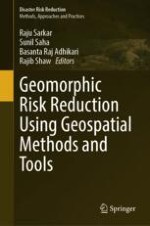2024 | OriginalPaper | Buchkapitel
13. Measuring Landslide Susceptibility in Jakholi Region of Garhwal Himalaya Using Landsat Images and Ensembles of Statistical and Machine Learning Algorithms
verfasst von : Sunil Saha, Anik Saha, Raju Sarkar, Kaustuv Mukherjee, Dhruv Bhardwaj, Ankit Kumar
Erschienen in: Geomorphic Risk Reduction Using Geospatial Methods and Tools
Verlag: Springer Nature Singapore
Aktivieren Sie unsere intelligente Suche, um passende Fachinhalte oder Patente zu finden.
Wählen Sie Textabschnitte aus um mit Künstlicher Intelligenz passenden Patente zu finden. powered by
Markieren Sie Textabschnitte, um KI-gestützt weitere passende Inhalte zu finden. powered by
